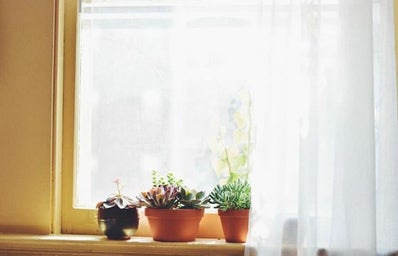Besides feeling gloomy over the fact that we may be stuck in this quarantine longer than I thought, I spent my time investing in my creative passions and hobbies. I’ve been writing and singing songs, painting for fun, and reading. But one thing that has really helped me during this quarantine is when I decided to take up gardening.
Nothing was more therapeutic than when it came to growing and caring for plants. At first, I was very amateur, knowing absolutely nothing about growing my own plants. I would buy basil and cilantro plants and watch them slowly die weeks later. My dad even coined the nickname “Black thumb” for me. But as time went by, the more my plants flourished. Here’s a couple of tips I learned along the way:
- Making your own macrame
-
I know we have all seen those cute little plant hangers called macrame displayed at our local Targets or even Pinterest. But why spend money on them when you can easily just make some yourself? My friend inspired me to look up macrame making when she made me my own macrame with just some rope and simple knotting. They honestly turned out so cute, and you can customize your own hanger with whatever rope, color, and decor you’d like on it! This article shows you 16 different and easy macrame hacks for beginners.
- Using leftovers or buying plants fully grown
-
No joke, this is something I learned from watching a TikTok. Use the ends of green onions and place them in a mason jar filled with water (approximately at one-inch). Replace the water daily, give it some sunshine, and voila! You have your own fully grown and fresh green onions. It’s a super simple way for people who don’t really want to take care of plants or maintain them for long periods of time. It also saves you some money on groceries. I have used this trick to grow my own green onions and it has done wonders for my fried rice recipe. This also works for the ends of celery sticks, as well as leeks.
- Propagation
-
Propagating plants is probably one of the easiest things to do for beginners. Propagation is when you take broken leaves, stem, or roots from a plant, and grow it into an entirely new plant. Not only is this an effortless method, but it is also cost-free because you can grow a new plant without having to buy another one! Here is a more in-depth explanation of how to propagate properly and some plants that can help you get started on propagating.
- Buying easy plants
-
This is probably self-explanatory, but I think it is a good reminder to let eager and new plant owners know that they should start off by purchasing easy plants that do not require a lot of TLC. Buying plants that don’t require much watering (in case you forget), or buying plants that do not require much sunlight, is a nice way to ease a new plant owner into learning how to grow and take care of plants properly. Here is a chart that shows some plants you can buy if you are ready to begin your plant-loving lifestyle.
Do not get discouraged if you do follow all these tips and your plants still turn brown! Sometimes plants do not grow properly due to other unexplained circumstances. I still struggle at growing basil plants successfully, even after countless tries. At the end of the day, all that matters is the love, care, and nourishment you provide.


